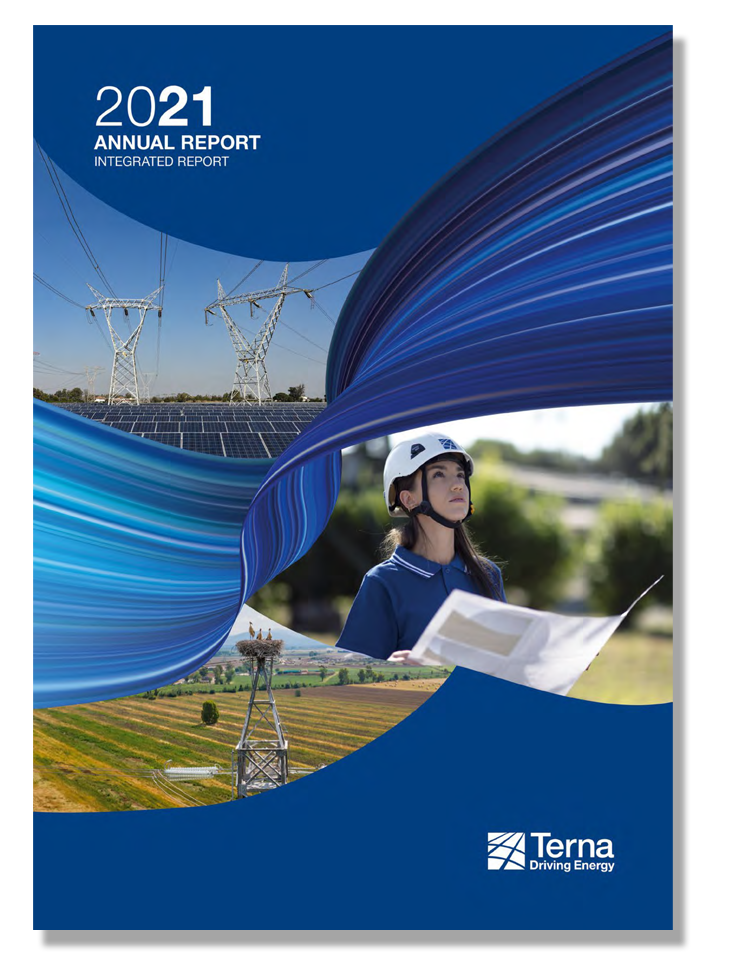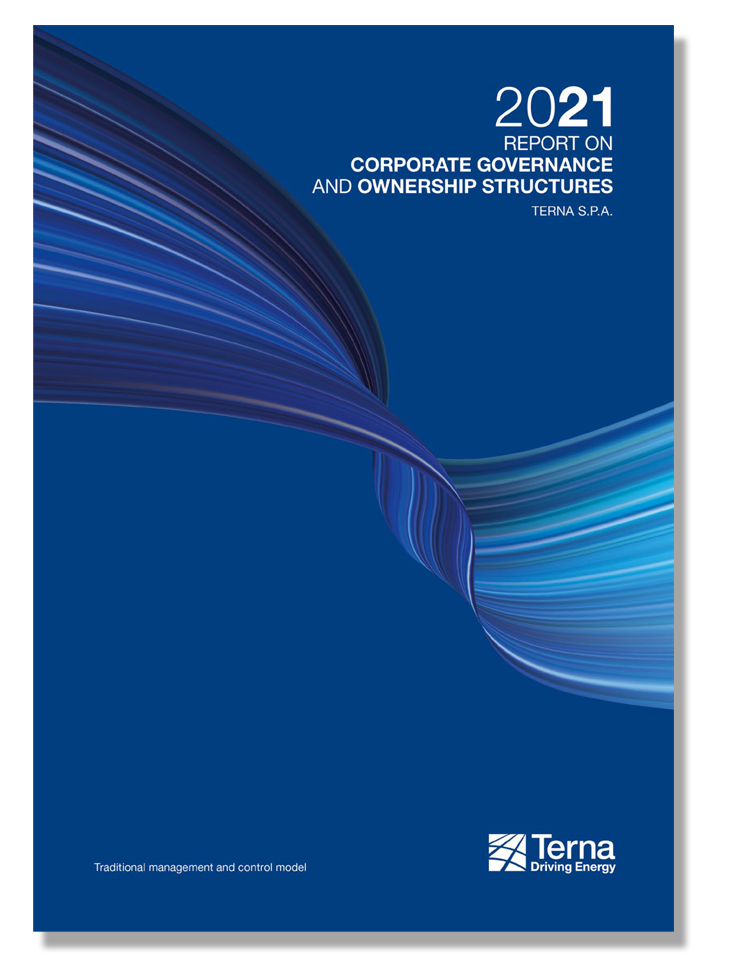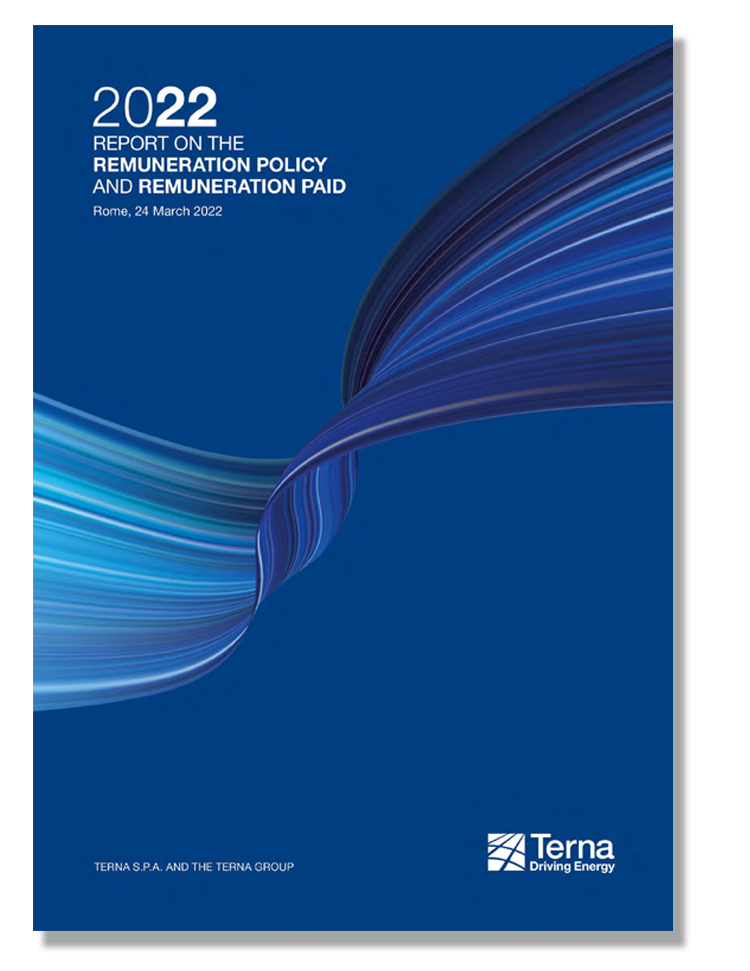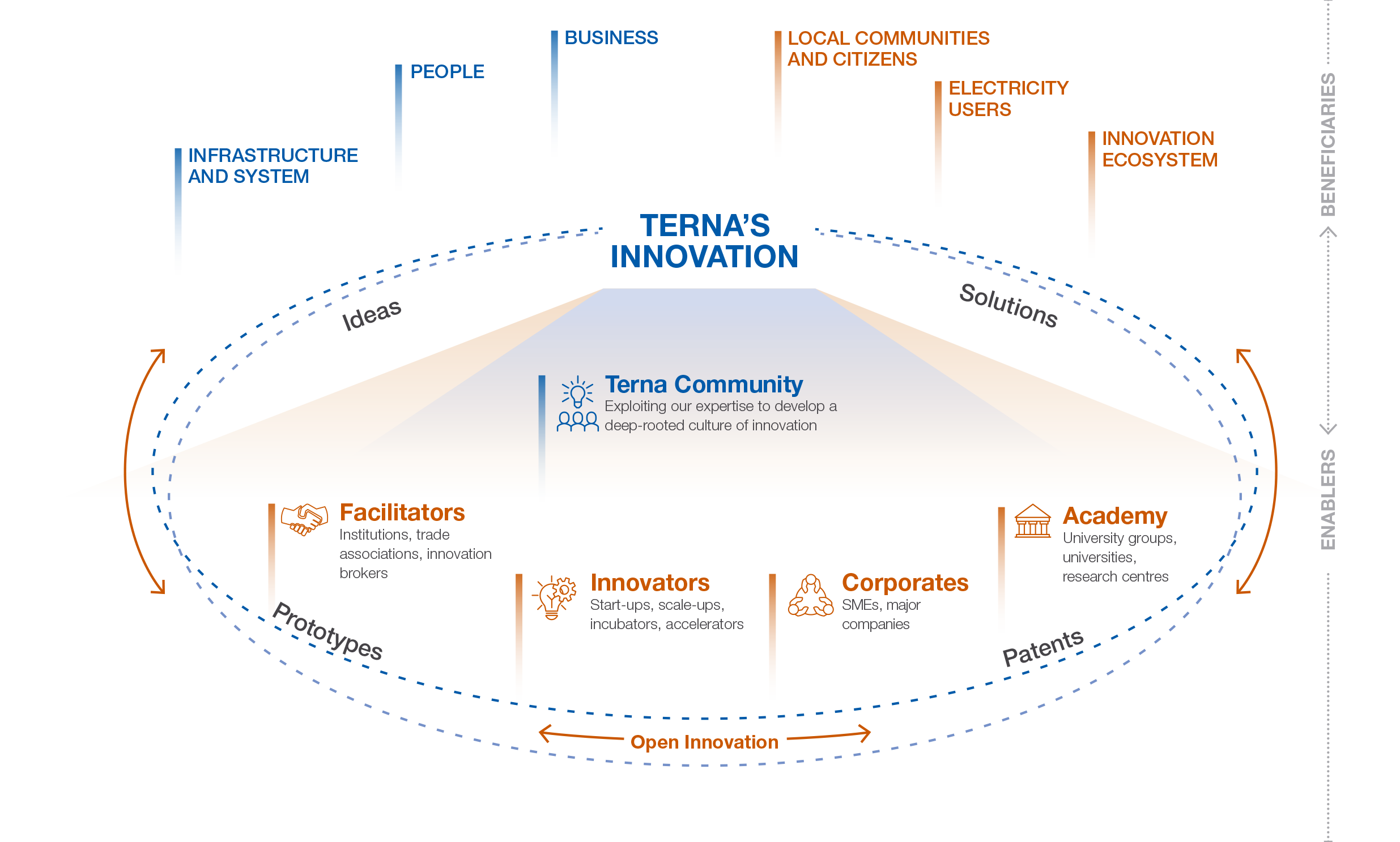



driving energy
We are Europe’s largest independent electricity transmission system operator.
We are engaged in driving and enabling the ecological transition in order to create a new development model based on renewable sources and respect for the environment.
Sustainability, innovation and distinctive competencies are behind everything we do, with the aim of providing the generations to come with a clean, accessible and emission-free energy future.
We have the major responsibility for providing the country with energy, ensuring security, quality and cost-effectiveness over time.
We manage Italy’s high-voltage electricity transmission grid, one of the most modern and technologically advanced in Europe, which we are working to develop and integrate with the European grid, guaranteeing secure and equal access to all grid users.
We are developing Non-regulated Activities and new business opportunities, making our expertise and experience available in Italy and overseas.
driving energy
Terna’s role in the energy transition
The role played by Terna and its investment strategies is essential in managing the profound transformation currently under way in energy generation and consumption.
The electricity system supply chain is made up of several segments: production, transmission, distribution and the sale of electricity. Tasked with transmission and dispatching, Terna is responsible for the key transmission segment. As Transmission System Operator (TSO), Terna must on the one hand design a grid capable of handling the progressive decarbonisation of the sources of production and the growing integration of renewables (“transmission operator”), whilst on the other guaranteeing that, at all times, energy demand from consumers is always balanced by the amount produced through socalled “dispatching” (“system operator”).
This is an extremely complex task, requiring an independent central coordinator capable of taking an overall view on a high number of actors, both on the supply and the demand side: this is why we refer to ourselves as “driving the transition”.
An extremely complex challenge. Economic growth is based on an energy model that is no longer sustainable, whilst the world is crying out for a collective commitment to cutting greenhouse gas emissions as quickly as possible. Taking up (and meeting) this challenge means proposing a new approach to efficiency, sustainability and security in all areas of the economy, starting with the energy sector.
Terna plays a central role in this major transition process, as we enable the integration of renewables and the electrification of consumption.
The electricity will be the main energy carrier and the electricity grid will operate as the “backbone” for decarbonisation for all the other energy sectors. This reflects the carrier’s intrinsic efficiency and the technological maturity of renewable energy sources (RES).
To fully exploit this potential, the proportion of total energy demand met by electricity needs to grow progressively, involving what is defined as electrification of the system.
This factor, together with the growing penetration of renewables (which are projected to cover over 85% of the electricity generation mix by 2050, under the European Commission’s long-term strategy and excluding nuclear power), will help to fully decarbonise energy consumption by 2050, starting with light transport, housing and services.
Letter to stakeholders
Letter to stakeholders
2021 was again marked by the ongoing pandemic and global economic uncertainty. In spite of this, electricity consumption in Italy rose 5.6% compared with 2020, broadly returning to the pre-Covid levels of 2019, and against this backdrop Terna has seen improvements across all key performance indicators. Since May 2020, we have in fact decided to effect a major step change in the Group’s activities, aware of our fundamental role in leading the energy transition and driving Italy’s economic recovery. This has resulted in seven consecutive quarters of rising investment, with expenditure focusing more than ever on delivery of the projects included in our Industrial Plan. Work is progressing rapidly and on schedule in order to complete projects with a key role to play in achieving the ambitious decarbonisation targets Italy has set itself.
Our new 2021 National Transmission Grid Development Plan was presented in July. The Plan envisages investment of €18.1 billion over the next ten years, a record amount for Terna and an increase of 25% compared with the previous plan. The Plan includes over 30 strategic projects, synergies with other infrastructure with a view to integrating networks and reducing the impact on the surrounding environment, more electrification in metropolitan areas, an increase in connections between the islands and the mainland, and the consolidation of overseas interconnections to boost cross-border exchange capacity. These are all projects, involving the upgrade and development of the national transmission grid, that we believe are indispensable if we are to successfully integrate renewable sources into the Italian electricity system and move our country towards net zero. The project that symbolises our Development Plan is the Tyrrhenian Link, the submarine interconnector linking Campania, Sicily and Sardinia. The public consultation process began in early 2021, with the consents process for the eastern section linking Sicily and Campania formally initiated in November. The power line, which will cost approximately €3.7 billion, is due to enter service during the life of the Plan and will make a major contribution to the growth and integration of renewable sources in the larger islands and, as a result, to their decarbonisation. 2021 also saw Terna set a new record: 37 new projects authorised by the Ministry for the Ecological Transition and regional authorities, amounting to investment of more than €1 billion and almost four times the number of projects approved in 2020.
The works envisaged by the Development Plan, which will enable us to cut CO2 emissions by 5.6 million tonnes, confirm the strength of Terna’s commitment to a sustainable energy transition. Sustainability is not only a strategic driver of our Industrial Plan and one of the cornerstones of the Company’s growth, ensuring alignment with the principles of the Global Compact of which we are a member, but also means that we have a responsibility to ensure ever greater transparency and disclosure. For this reason, during the COP26 event in Glasgow, at the end of October, we launched Terna4Green, a one-of-a-kind interactive platform for monitoring data for national electricity production and the related CO2 emissions.
Our approach to constructing electricity infrastructure that is well-integrated into the surrounding environment is also sustainable. We have forged an ever-closer relationship with the areas we operate in, further reinforcing this in June with the launch of a major reforestation project in a number of Italian regions, with the aim of increasing biodiversity and reducing hydrogeological risk and soil erosion. Our desire to create an inclusive culture, protect diversity, and prevent and punish any form of discrimination are also examples of sustainability. Finally, sustainability also translates into concrete initiatives, such as efforts to cut the waste produced by our activities, reusing materials, converting our vehicles to electric and eliminating plastic from the Company’s canteens. This commitment has resulted in Terna’s inclusion in the leading international ESG indexes.
In a year that continued to be marked by the health emergency linked to Covid-19, we were again able to remain fully operational whilst remaining clearly focused on guaranteeing the health and safety of all our people. The introduction of New Ways of Working showed the Company’s ability to respond to the challenges thrown up by the pandemic and demonstrated our key role in pioneering and driving the transition.
The beginning of the year saw the launch of NexTerna, the ambitious programme of cultural transformation designed to introduce new ways of working through the active, informed involvement of our people. This marks an unprecedented challenge, involving the definition of a new leadership model in keeping with the new approach to work, with the aim of creatively integrating inclusion and sustainability with the Company’s distinctive style and character. We have also introduced new ways of working that focus on the digitalisation of processes and tools to enhance efficiency and productivity, bring logistical benefits and, above all, improve the quality of the lives of our people, Terna’s most important asset.
The numerous projects launched as part of the NexTerna programme include measures designed to facilitate remote working, either from home or at the Remote Working Hubs opened in Rome, and those involving the digitalisation of many business processes. Other initiatives, launched to improve people’s wellbeing and work-life balance, regard support for parenthood and female employment and for young parents. This has included, for example, the opening of the MiniWatt crèche at Terna’s head office. The progress made thanks to the launch of innovative agile working projects has resulted in Terna being named the World’s Best Employer 2021 in the Utilities category, based on the results of a survey conducted by Forbes and Statista, and Italy’s Best Employer 2022 in the energy sector. Another survey carried out by Statista saw Terna named best employer ahead of other Italian companies.
Innovation and digitalisation are the other two cornerstones underpinning our activity in 2021 and on which we intend to focus to ensure our future growth. We have launched 70 innovation projects, with around 70% dedicated to maintenance of the national grid and dispatching. This has involved experimenting with robotics, drones and augmented and virtual reality with the aim of leading the response to the challenges resulting from the energy transition, as part of a systemic approach that can bring benefits for the whole community. Aware of the value of innovation for our business, we have also launched Terna Ideas, a corporate entrepreneurship programme that aims to spread the culture of innovation throughout the Company and give workers the chance to express their potential as entrepreneurs, making use of their creativity and expertise and giving them a leading role in achieving the Group’s objectives.
All our achievements are down to the excellence shown by Terna’s people who, despite the high-pressure, difficult global environment in which we were forced to live and work, have enabled us to take advantage of major opportunities. Thanks to them, we are pleased to be able to report extremely satisfying results, providing further proof of the major contribution our Group makes to the creation of value for our shareholders, stakeholders and the country as a whole.
highlights
highlights(€m)

+13.82 %
vs €6,250 per share at 31.12.2020
recorded on 1 March 2022
5 substations were purchased
ELECTRICITY SYSTEM
Performance well below targets set by ARERA
* Provisional data.
capital
capital
capital
capital
relationship capital
capital




 Ensure access to affordable, reliable, sustainable and modern energy for all.
Ensure access to affordable, reliable, sustainable and modern energy for all.
 Build resilient infrastructure, promote inclusive and sustainable industrialisation and foster innovation.
Build resilient infrastructure, promote inclusive and sustainable industrialisation and foster innovation.
 Take urgent action to combat climate change and its impacts.
Take urgent action to combat climate change and its impacts.
 Strengthen the means of implementation and revitalise the global partnership for sustainable development.
Strengthen the means of implementation and revitalise the global partnership for sustainable development.
 Ensure inclusive and equitable quality education and promote lifelong learning opportunities for all.
Ensure inclusive and equitable quality education and promote lifelong learning opportunities for all.
 Achieve gender equality and empower all women and girls.
Achieve gender equality and empower all women and girls.
 Promote sustained, inclusive and sustainable economic growth, full and productive employment and decent work for all.
Promote sustained, inclusive and sustainable economic growth, full and productive employment and decent work for all.
 Reduce inequity within and among countries.
Reduce inequity within and among countries.
 Make cities and human settlements inclusive, safe, resilient and sustainable.
Make cities and human settlements inclusive, safe, resilient and sustainable.
 Ensure sustainable consumption and production patterns.
Ensure sustainable consumption and production patterns.
 Protect, restore and promote sustainable use of terrestrial ecosystems, sustainably manage forests, combat desertification, and halt and reverse land degradation and halt biodiversity loss.
Protect, restore and promote sustainable use of terrestrial ecosystems, sustainably manage forests, combat desertification, and halt and reverse land degradation and halt biodiversity loss.
 Promote peaceful and inclusive societies for sustainable development, provide access to justice for all and build effective, accountable and inclusive institutions at all levels.
Promote peaceful and inclusive societies for sustainable development, provide access to justice for all and build effective, accountable and inclusive institutions at all levels.

























